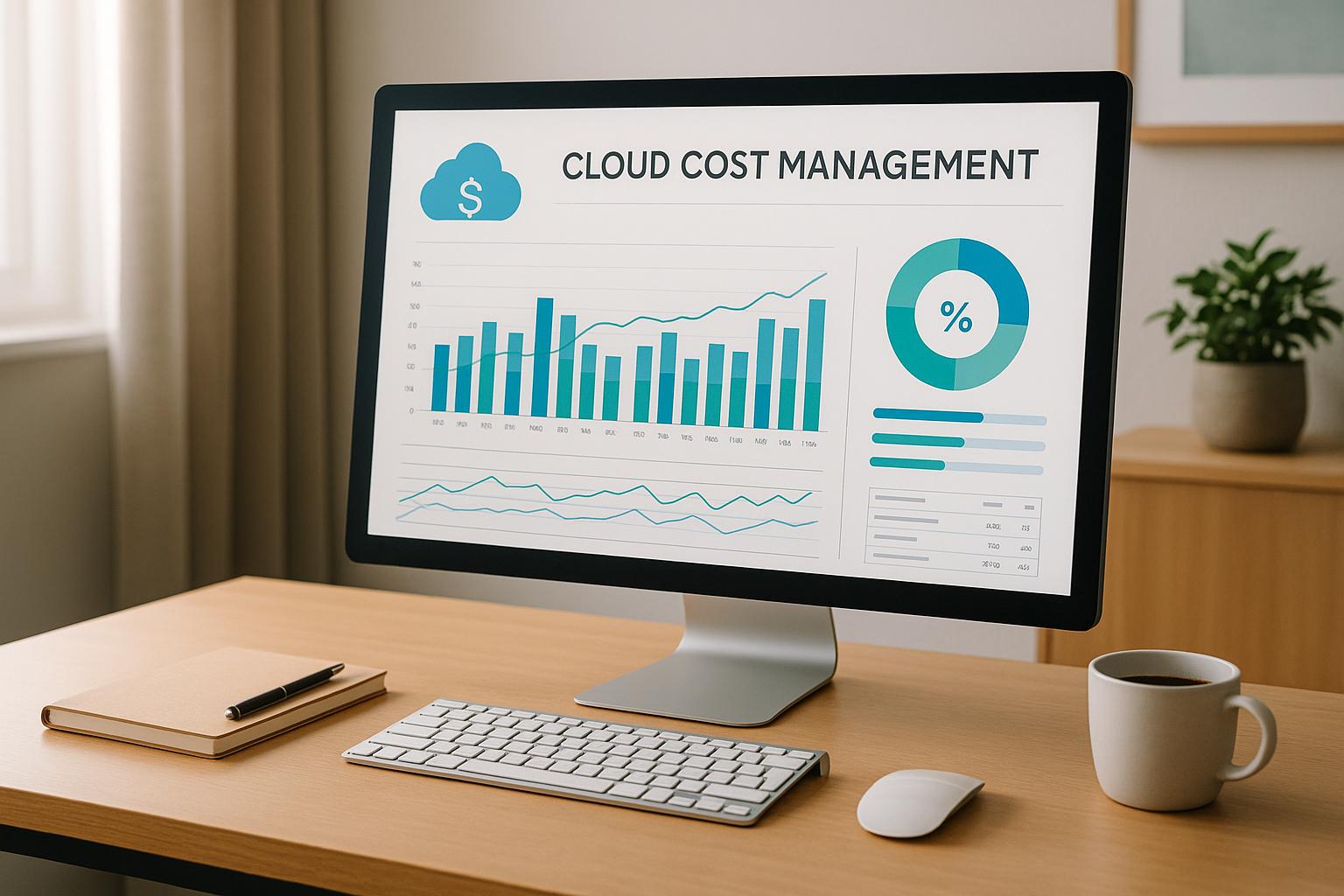Managing private cloud costs can be challenging. Unlike public clouds with clear usage-based billing, private clouds often lack transparency, making it harder to track spending and prevent waste. Here’s what you need to know:
- Cost Challenges: 80% of IT leaders find private cloud costs harder to manage. Nearly 30% of cloud spending is wasted.
- Key Issues: Lack of visibility, difficulty in cost allocation, and specialised expertise are common hurdles.
- Tools to Help: Solutions like CloudZero, Nutanix Cloud Manager, VMware vRealize Operations, Virtana, and Kubecost can reduce costs by up to 32%.
- Strategies That Work: Rightsizing resources, automating policies, and using chargeback/showback systems can improve accountability and cut waste.
Quick Comparison of Tools
| Tool | Key Feature | Best For | Example Savings |
|---|---|---|---|
| CloudZero | Real-time cost insights | Engineering teams | £3.2M saved by Drift |
| Nutanix Cloud Manager | Governance for hybrid clouds | Complex infrastructures | Monthly savings at UC San Diego |
| VMware vRealize Ops | Costing by cluster | VMware ecosystems | N/A |
| Virtana | Real-time rightsizing | Preventing idle resource waste | £1,200/month saved by Viewpost |
| Kubecost | Kubernetes-specific cost tools | Developers/FinOps teams | N/A |
With the right mix of tools and strategies, you can gain control of private cloud costs while maintaining performance.
Let's Extend FOCUS: Defining the Future of Private Cloud Cost Management
Top Tools for Managing Private Cloud Costs
Managing private cloud expenses can be a challenge, but the right tools can make a big difference. In fact, cost management platforms can help organisations save up to 32% of their budgets by keeping spending under control and offering actionable insights [2]. Below, we’ll explore five standout tools that take different approaches to optimising private cloud costs.
CloudZero: Real-Time Cost Insights
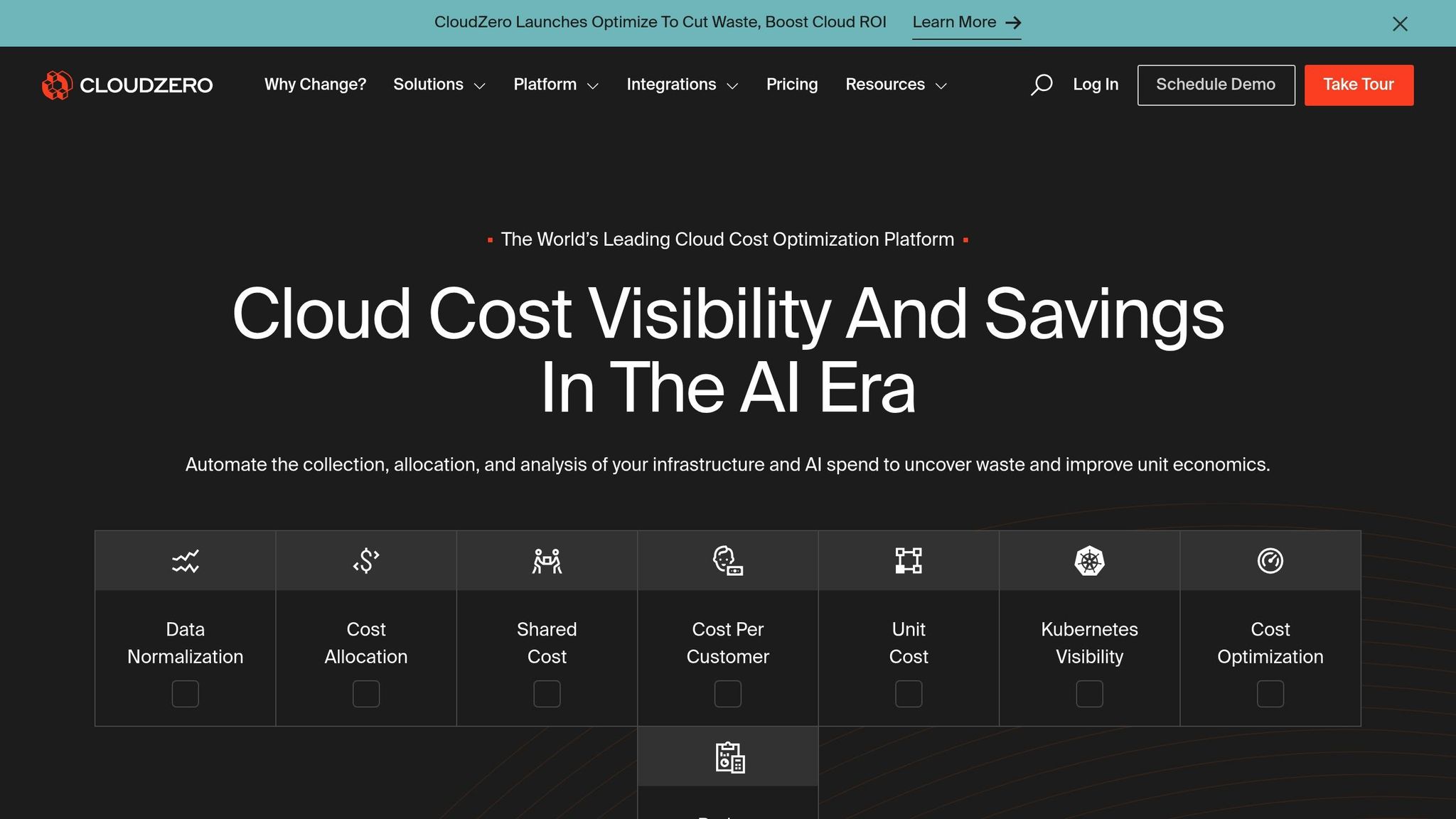
CloudZero is all about giving teams a detailed view of their cloud spending. It’s particularly helpful for engineering teams that need precise, real-time data to make informed decisions. With features like anomaly detection and automated insights, CloudZero can identify unusual spending patterns before they spiral out of control.
Here’s how effective it can be: Ninjacat slashed costs by 40% using CloudZero’s granular allocation features [2], and Drift saved an impressive £3.2 million by leveraging its engineering-focused tools [2]. The platform connects costs directly to business metrics, allowing teams to see exactly what each customer, feature, or service costs to run. This level of transparency helps businesses make smarter decisions about resource allocation and architecture changes. It’s no surprise CloudZero has a 4.5/5 rating on G2 [2].
Nutanix Cloud Manager: Governance for Hybrid and Private Clouds
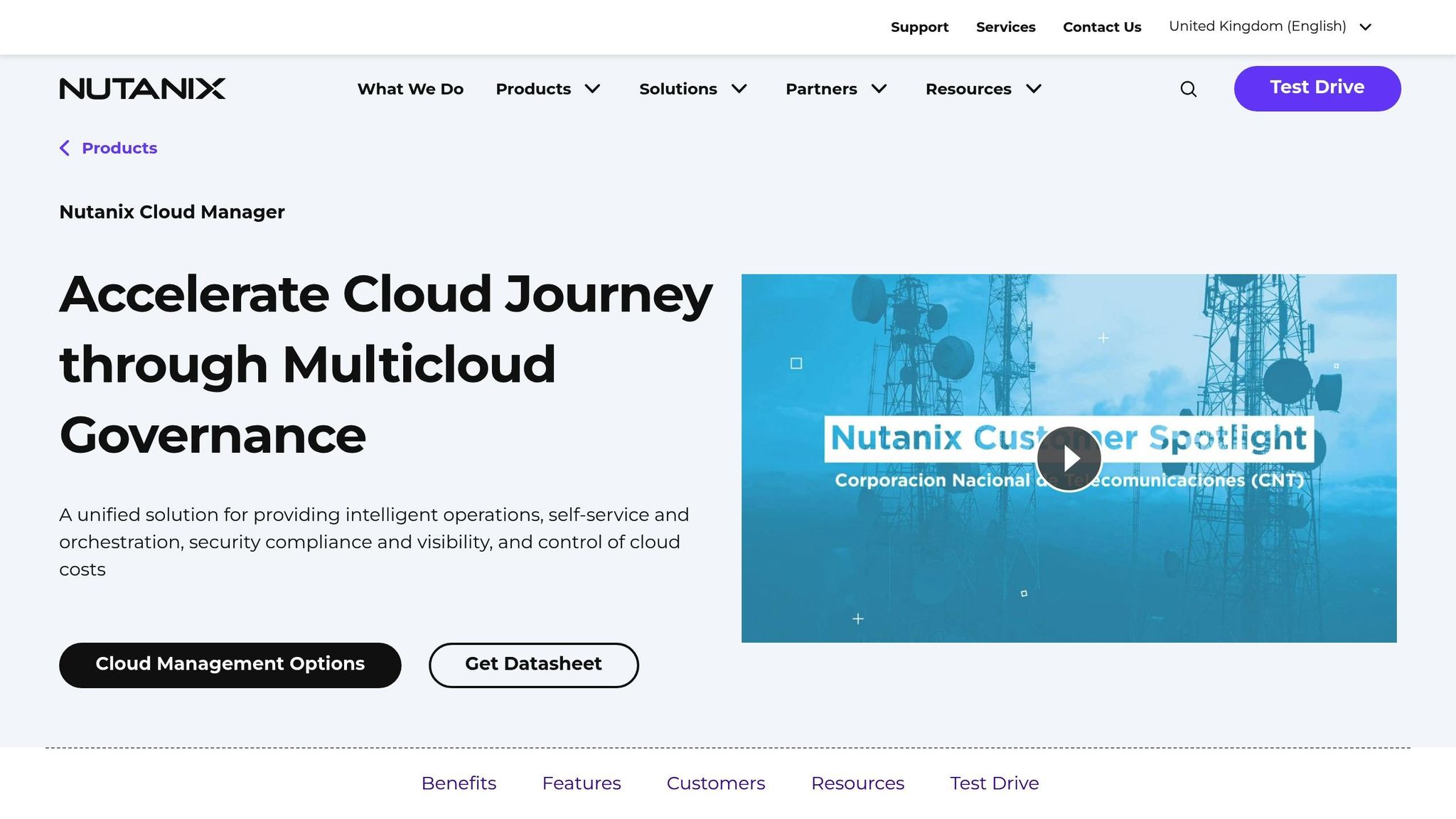
Nutanix Cloud Manager (NCM) is designed for organisations juggling hybrid or private cloud setups. It offers centralised dashboards and automated chargeback features, making cost management straightforward and accessible. NCM is particularly useful for industries managing End User Computing (EUC) or database environments.
A great example of its impact is UC San Diego, which achieved consistent monthly savings by using Nutanix’s code-free automation and cost governance tools [5]. Its centralised approach simplifies tracking and managing expenses across complex cloud infrastructures.
VMware vRealize Operations: Costing by Cluster
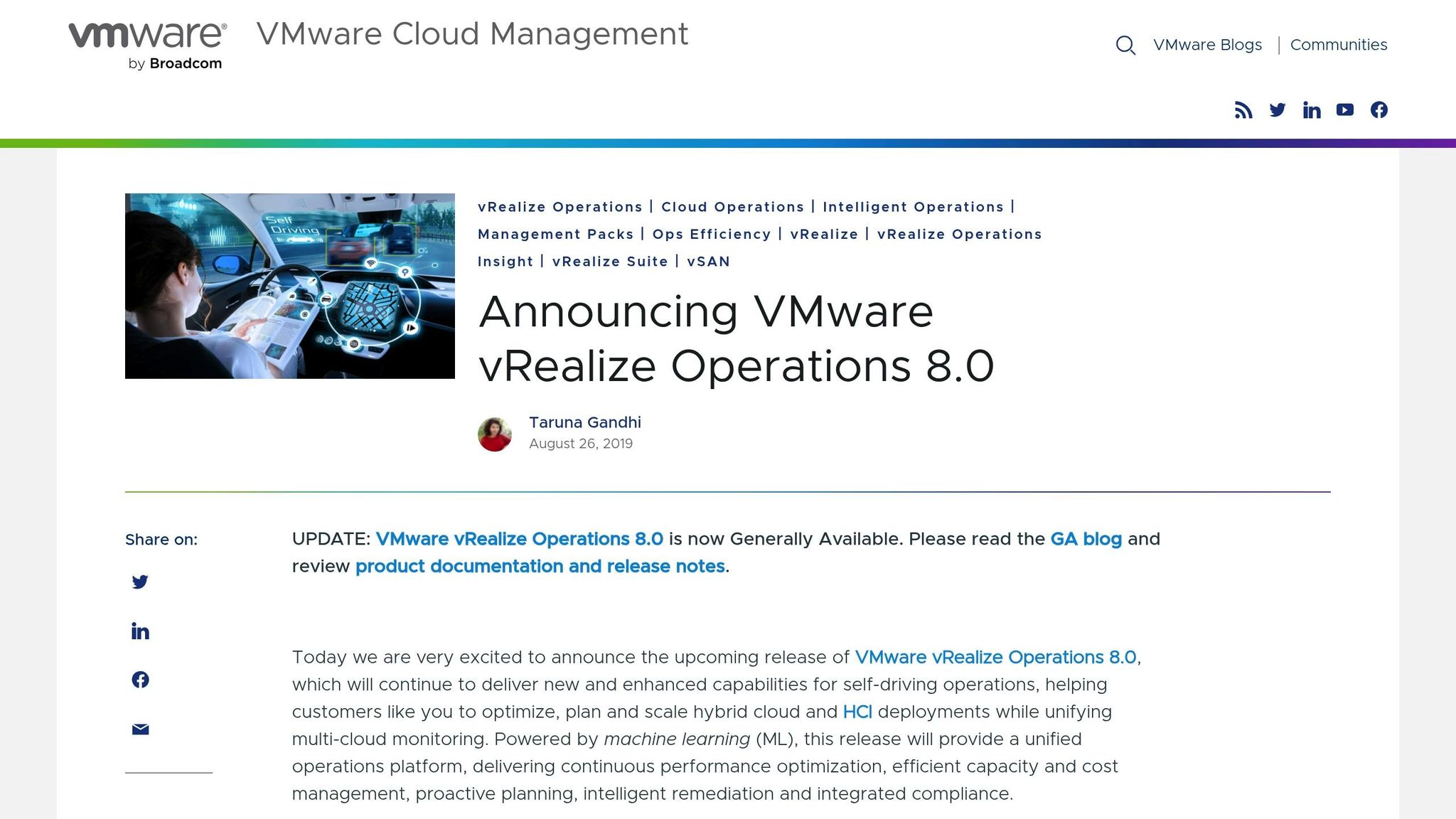
For organisations already entrenched in VMware ecosystems like vSphere or vSAN, VMware vRealize Operations is a natural fit. It calculates costs based on cluster utilisation and allows for customisable allocation, helping teams manage capacity proactively and efficiently. This tool is ideal for those looking to maximise their existing VMware investments.
Virtana Cost Management: Focused on Rightsizing
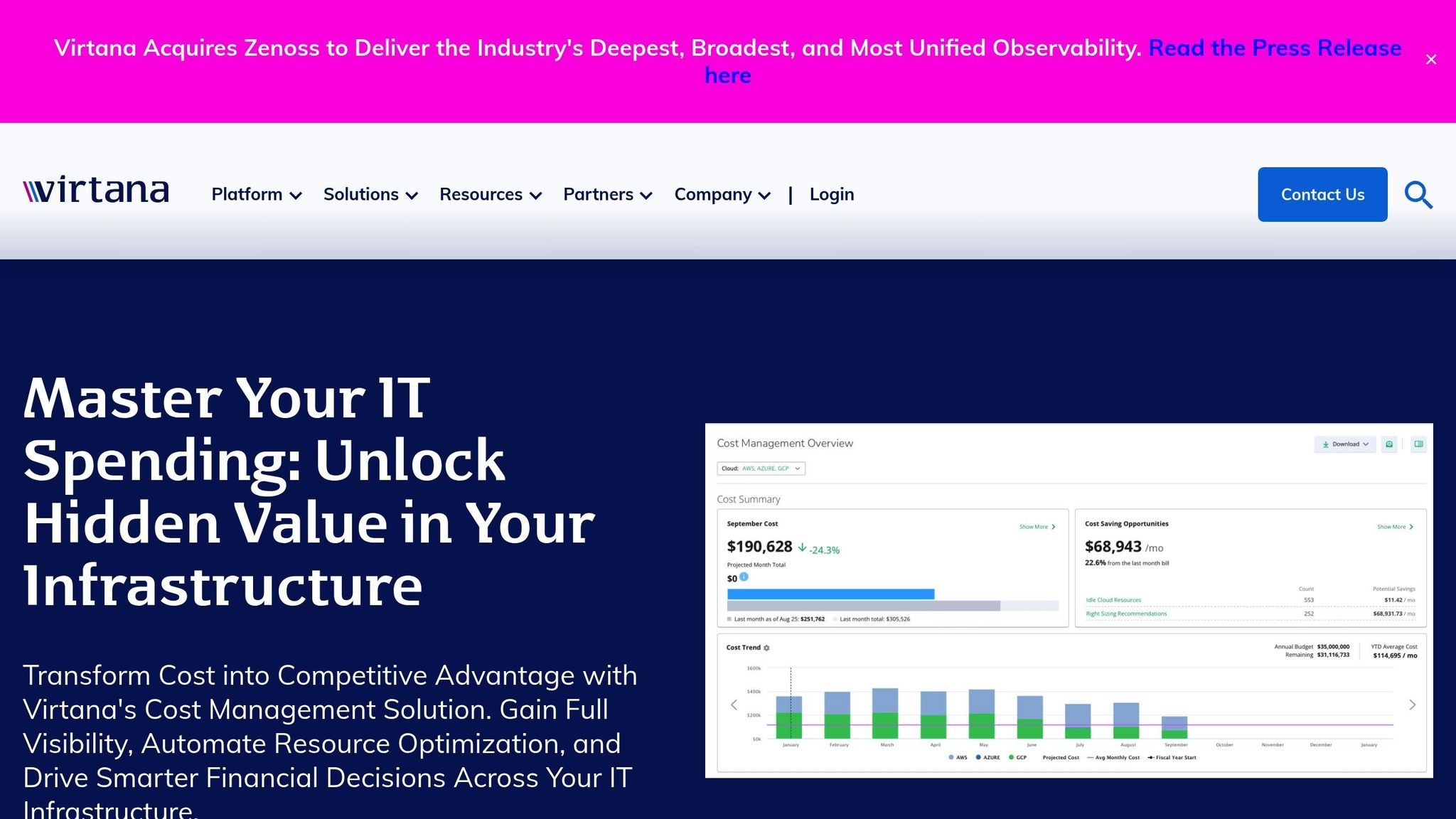
Virtana excels in real-time rightsizing and eliminating waste. Its automated scaling capabilities continuously monitor resource usage, ensuring that idle resources are identified and addressed. This proactive approach prevents unnecessary expenses from piling up.
For example, Viewpost managed to cut AWS costs by over 50% and saved £1,200 per month by decommissioning unused instances with Virtana [4]. The platform’s focus on optimisation ensures that workloads are supported without overspending.
Kubecost: Tailored for Kubernetes
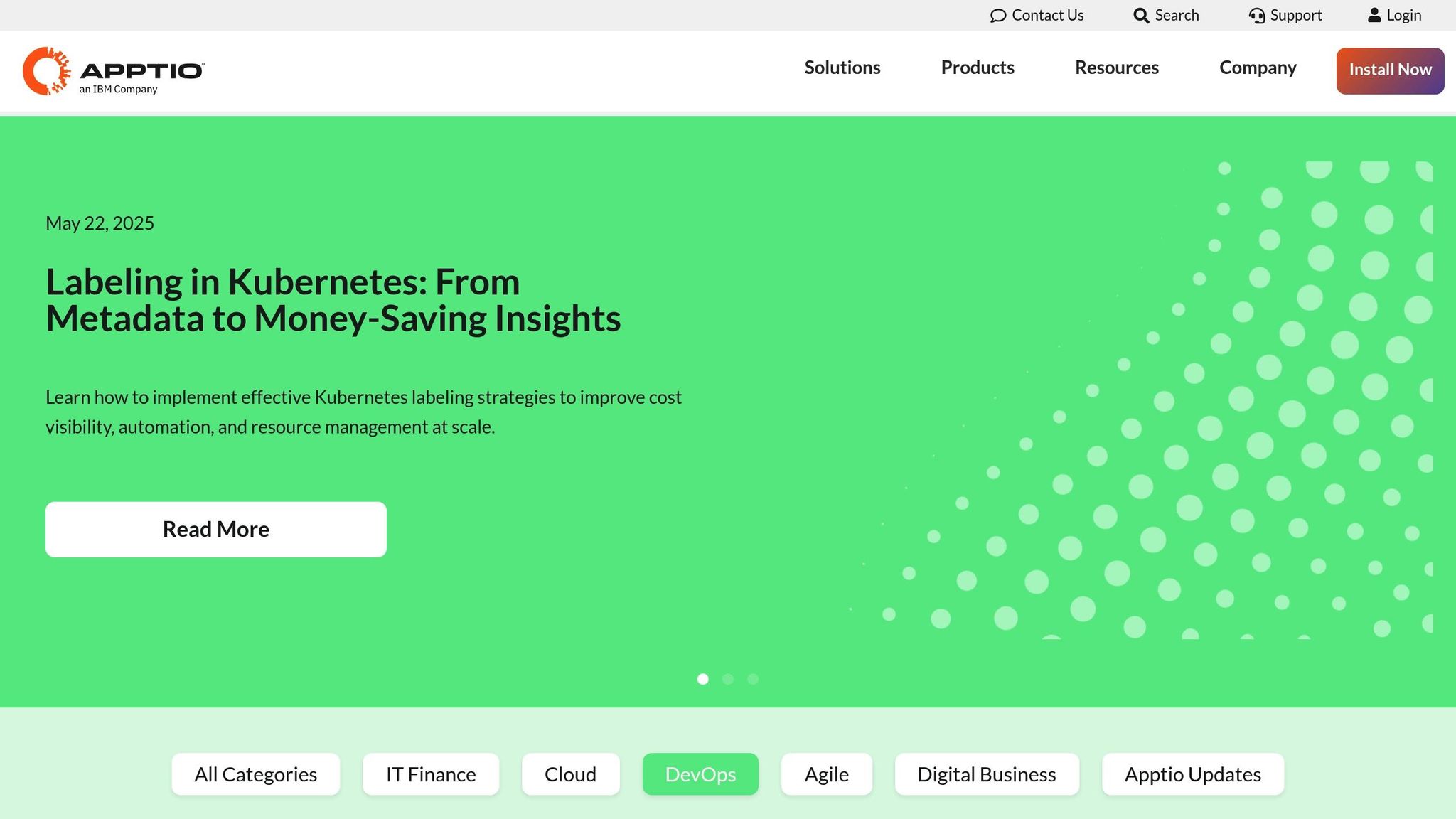
If your organisation relies on Kubernetes, Kubecost is a must-have. It provides detailed cost allocation at the namespace level and supports multi-cloud environments, making it a favourite among developers, FinOps teams, and finance professionals. With a 5/5 G2 rating, it’s clear that users value its ability to break down costs by namespace, deployment, service, and even individual pods [3].
Kubecost’s granular insights make it easier to optimise container resource allocation, ensuring that Kubernetes clusters are as cost-efficient as possible.
These tools offer a variety of ways to tackle private cloud cost management. Whether you need real-time insights, automated scaling, or Kubernetes-specific solutions, there’s a platform that can align with your organisation’s needs and help keep spending in check.
Key Methods for Effective Cloud Cost Management
Having the right tools is just the starting point. Achieving real savings requires adopting strategies that not only control costs but also maintain performance. Below are three key approaches to help your organisation manage private cloud expenses more effectively. When combined with the right tools, these methods can significantly enhance cost control across private cloud environments.
Rightsizing Resources for Optimal Performance
At its core, rightsizing ensures your infrastructure matches your actual needs. This involves aligning factors like instance size, speed, memory, and network capacity with workload demands, avoiding both over-provisioning and under-provisioning [6][7].
To make rightsizing successful, it's essential to continuously monitor resource usage. Automating vertical or horizontal scaling, integrating rightsizing into your CI/CD pipeline, and enforcing tagging for accurate tracking are all effective steps [6][7]. The key is to treat rightsizing as an ongoing, automated process rather than a one-time task. After all, demand and circumstances are always changing [6][7].
Automated Policy Enforcement
Relying on manual reviews simply can’t keep up with the pace of modern cloud environments. Automated policy enforcement provides a proactive solution, acting as a financial safeguard by setting rules that prevent waste before it occurs. In fact, over half of organisations now prioritise waste reduction as their top concern [8].
Automated systems can alert teams when costs exceed predefined thresholds, enforce tagging policies, and limit non-production resource usage. For example, one major bank implemented such automation and managed to save £50 million in just six months while improving self-service data access for over 5,000 users [9][10].
As Andrew DeLave, Senior FinOps Specialist, explains:
By empowering engineers with automated optimization, organizations can reduce waste without disrupting innovation. The goal isn't just cutting costs; it's ensuring cloud resources are used efficiently while allowing teams to focus on what they do best.[8]
Implementing Showback and Chargeback Mechanisms
When it comes to cloud cost management, visibility is key. Showback and chargeback mechanisms encourage teams to be more mindful of their resource consumption by highlighting its financial impact. With global cloud spending projected to hit £805 billion in 2024 and potentially doubling by 2028 [11], clear accounting practices are more important than ever.
- Showback offers transparency by reporting on cloud usage costs without imposing financial penalties.
- Chargeback, on the other hand, goes a step further by billing individual departments for their consumption [12].
Here’s a quick comparison:
| Aspect | Chargeback | Showback |
|---|---|---|
| Purpose | Departments pay for what they consume [11] | Promotes transparency without penalties [11] |
| Audience | Finance or accounting teams [11] | IT or departmental managers [11] |
| Timing | Post-consumption with detailed reconciliation [11] | Real-time or near real-time visibility [11] |
| Approach | Formal with strict accountability [11] | Informal, focusing on awareness [11] |
Starting with showback is a good way to raise awareness without causing immediate financial strain [13]. Once teams have a clear understanding of their consumption patterns, you can gradually transition to chargeback to introduce financial accountability. This phased approach helps minimise resistance and avoids disputes that might arise if chargeback is implemented too abruptly [13].
Ultimately, showback builds transparency, while chargeback enforces accountability. The best choice for your organisation will depend on how directly you want to tie cloud usage to budgeting and accountability.
Need help optimizing your cloud costs?
Get expert advice on how to reduce your cloud expenses without sacrificing performance.
Hokstad Consulting: Tailored Cost Optimisation Services
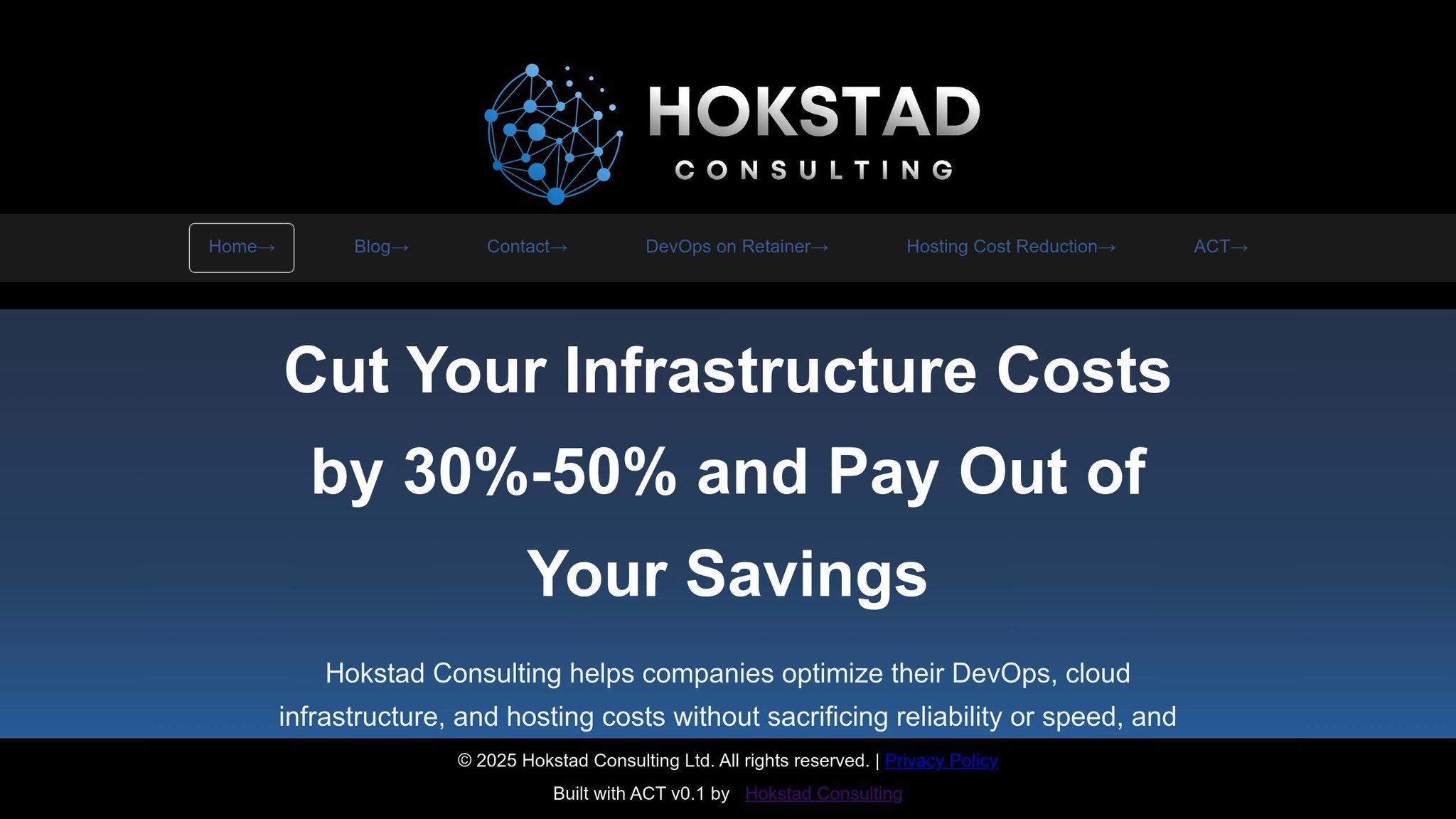
Having the right tools and strategies is just the starting point for managing private cloud costs effectively. Many organisations need expert input to apply these methods in a way that works for their specific needs. Hokstad Consulting specialises in reducing costs across DevOps, cloud infrastructure, and hosting, helping businesses achieve measurable savings while improving efficiency [14]. Their approach goes beyond mere cost-cutting, focusing on cloud cost engineering and infrastructure optimisation to create systems that are both cost-effective and high-performing. Here’s a closer look at how their bespoke services deliver results.
Custom Cloud Cost Audits
Hokstad Consulting begins with a deep dive into your private cloud setup, conducting a detailed cost audit. This process identifies inefficiencies that generic tools often overlook. For instance, one SaaS company saved around £96,000 annually after implementing their recommendations, while an e-commerce business saw a 50% boost in performance alongside a 30% cost reduction [14].
Cut Your Infrastructure Costs by 30%-50% and Pay Out of Your Savings[14]
Their audits focus on uncovering over-provisioned resources and finding automation opportunities, leading to a tailored optimisation plan that addresses your specific challenges.
Automation for Legacy Infrastructure Modernisation
Legacy systems often become a financial drain due to outdated processes and manual workflows. Hokstad Consulting addresses this by introducing automation solutions that modernise these environments without requiring a full-scale overhaul. Their methods include setting up CI/CD pipelines, implementing Infrastructure as Code, and deploying advanced monitoring tools. This approach eliminates bottlenecks and reduces errors. For example, a tech startup partnering with Hokstad cut deployment times from 6 hours to just 20 minutes, achieved 90% fewer errors, and reduced downtime caused by infrastructure issues by 95% [14].
By automating repetitive tasks, Hokstad enables development teams to focus on innovation, resulting in more stable and efficient private cloud systems.
Flexible Engagement Models
Hokstad Consulting also offers flexible engagement options to ensure their solutions fit the unique needs of each organisation. Their No Savings, No Fee
model is a standout feature, where they outline potential savings during an initial consultation and cap their fees to a portion of the savings achieved. If no measurable cost reductions are delivered, there’s no fee at all [16].
Our approach is simple: deliver real savings with minimal disruption – if we can't save you money, you don't pay a fee.[16]
For organisations requiring ongoing support, they provide options like hourly consulting or retainer agreements, tailored to fit specific requirements [15]. Whether you need a one-off audit, project-based improvements, or long-term infrastructure management, these flexible models ensure their services align with your goals.
Hokstad Consulting’s tailored solutions combine expertise, advanced tools, and a customer-focused approach, making them a trusted partner for private cloud cost management.
Building a Cost-Efficient Private Cloud
Creating a cost-efficient private cloud is no small task - it requires both technical expertise and a firm grip on financial management. With 89% of organisations now operating in multi-cloud environments and up to 32% of cloud budgets potentially wasted [1][17], the pressure to strike the right balance is immense.
At the heart of this effort is Cloud Financial Management (CFM). This isn't just about tracking expenses; it’s about weaving financial accountability into every layer of your organisation. CFM brings together IT, finance, and operations teams under a unified framework, ensuring that your private cloud moves from being a reactive cost centre to a proactive driver of value [18].
Governance: The Backbone of Cost Control
Sustainable cost management starts with strong governance. Implement systems for automated cost monitoring, enforce strict budgeting, and establish governance policies that promote responsible spending and compliance [1]. One critical step is accurate cost allocation - using tags to track resources by environment, application, owner, or cost centre. This level of detail helps you monitor how resources are consumed across departments, laying the groundwork for ongoing technical improvements [18].
Technical Optimisation: Continuous and Proactive
To keep costs under control, technical optimisation must be a continuous process. Regularly rightsize resources, enforce policies automatically, and use real-time monitoring tools to identify inefficiencies. Showback and chargeback models can also encourage departments to take responsibility for their cloud usage and spending. Additionally, techniques like compressing data and scheduling transfers during off-peak hours can help reduce operational costs [1].
Automation is another key player in cost efficiency. By automating processes like scaling resources, powering down non-production environments during quiet periods [20], and managing data lifecycles to shift infrequently accessed data to cheaper storage tiers [19], organisations can eliminate waste and maintain tighter financial control.
The Role of Expertise and Automation
For organisations grappling with complex setups - such as legacy systems or multi-cloud environments - expert advice can make all the difference. Specialists bring the insights needed to navigate these challenges, while automation tools ensure that processes remain efficient. Together, they create a solid foundation for achieving and maintaining cost efficiency.
A Long-Term Commitment
Cost efficiency isn’t a one-and-done task; it’s an ongoing effort [19]. By embedding financial strategy into your cloud operations and committing to continuous monitoring and refinement, you can build a private cloud that not only meets your current needs but also scales effectively as your business grows. This approach ensures sustainable cost management that evolves alongside your organisation.
FAQs
How can organisations use showback and chargeback to improve financial accountability in private cloud environments?
To strengthen financial accountability in private cloud setups, organisations can adopt showback and chargeback systems by following a structured approach. Showback offers insight into resource usage without imposing direct costs, while chargeback assigns costs to teams or departments based on their actual consumption. Defining these processes clearly promotes transparency and encourages mindful resource use.
Relying on automated tools to track resource usage and produce detailed reports is crucial for ensuring accuracy and building trust. Starting with a showback model allows teams to adjust to the concept of financial accountability before moving to chargeback. Regular assessments and tweaks based on feedback and shifting business requirements can make these systems even more effective.
What are the advantages of automating policy enforcement for managing private cloud costs, and how can it be done effectively?
Automating policy enforcement for managing private cloud costs comes with several important benefits. It helps organisations stay within their budgets, minimises manual mistakes, and boosts overall efficiency. With automated cost policies, businesses can keep a close eye on resource usage and take proactive steps to avoid overspending. For instance, automation can power down non-essential workloads after business hours or adjust resource allocation dynamically based on current demand, which helps keep costs under control.
To make this work effectively, start by setting well-defined cost policies and leveraging tools that integrate smoothly with your cloud setup. Solutions like Policy-as-Code (PaC) allow you to encode governance rules, providing real-time monitoring and automatic resource adjustments. This ensures your private cloud operates efficiently without the need for constant manual intervention.
How does optimising resource allocation help reduce private cloud costs, and what steps can ensure efficiency without compromising performance?
Optimising Resource Allocation to Cut Private Cloud Costs
Getting resource allocation right - often called 'rightsizing' - is key to trimming private cloud expenses. By aligning resources like virtual machines and storage with actual workload needs, you can avoid over-provisioning, minimise waste, and reduce costs, all while keeping performance levels high.
To make this work, it’s essential to keep a close eye on resource usage. Regularly monitoring performance, setting clear benchmarks, and using automation tools to spot underused or over-allocated resources can make a big difference. Taking it a step further, dynamically adjusting resources to match demand can unlock even more savings. For workloads that are predictable, reserving instances can offer an effective way to balance cost control with reliable performance in private cloud setups.
